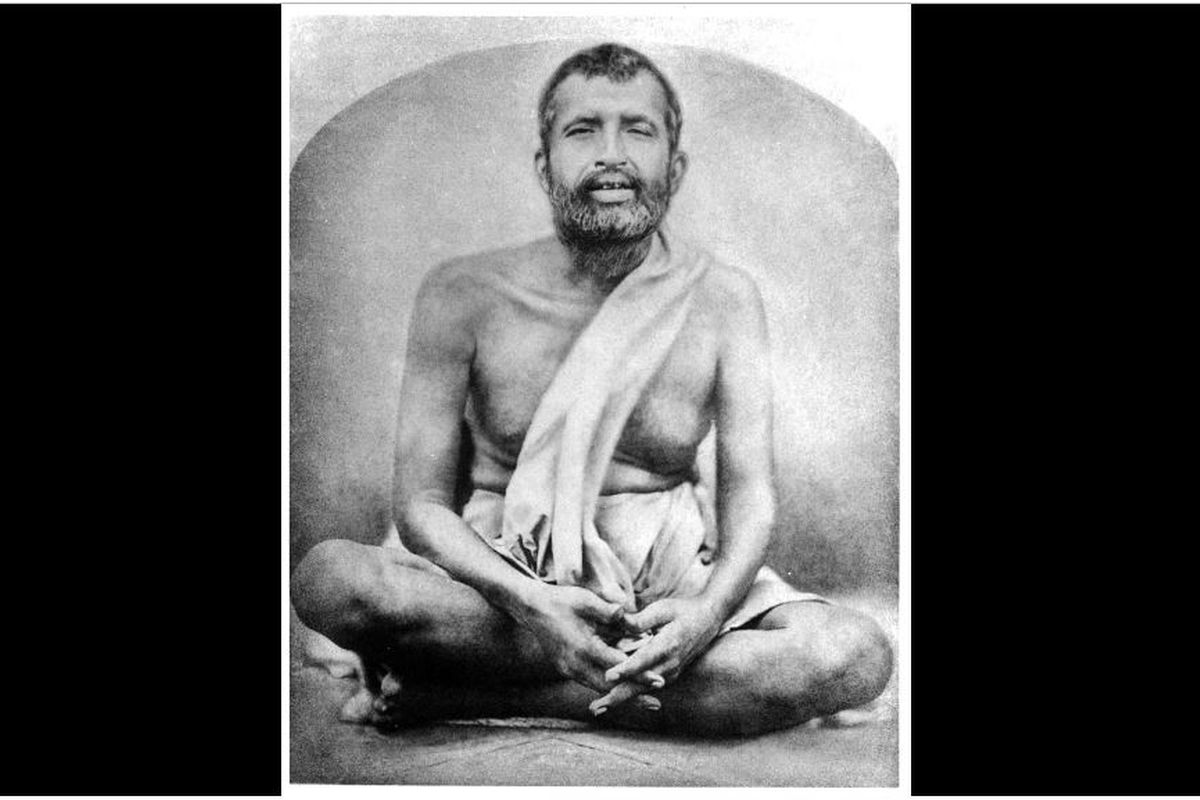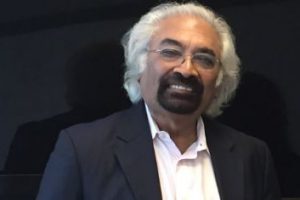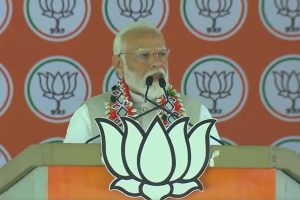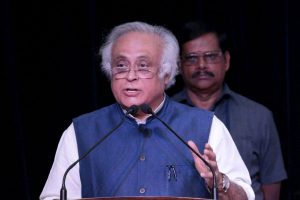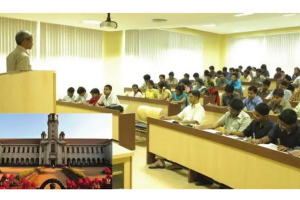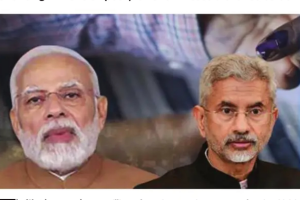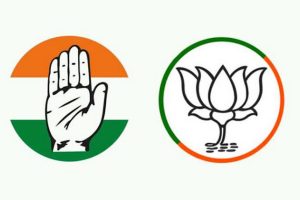For a mass movement to become successful and sustainable, three mutually complementary things are essential. They are Samgathana (organisation), Samannaya (harmony) and Samhati (unity). It rests on them solidly and flourishes in spite of the ravages of time. But how does it withstand the shocks of the capricious world? The answer lies in the intrinsic power which its impeccable leader infuses.
Unless its leader is an object lesson of the three indispensable pre-requisites, the organisation is liable to be weak and short-lived. This is specifically applicable to a spiritual movement with a definite humanitarian purpose. The Ramakrishna Movement was started by Sri Ramakrishna in the second half of the nineteenth century. It had a prodigious power within. Its novelty and nuance were not obtrusive at first. Sri Ramakrishna was a phenomenal organization in himself. People of all walks of life, castes and communities had free access to him and felt a natural sense of belonging. He was, in fact, limitlessly inclusive and innovative. Those who clung to him knew that he was their ultimate refuge as well as a pathfinder and there was no one to match him. Amorphous elements though they were, they were nevertheless one in him. He exuded a sublime charisma which had an attraction difficult to remain aloof from. It was this mould that he dexterously recast and bound the sincere among them. So the legacy they imbibed and carried forward was his alone.
There was no confusion in them with regard to what they were doing at his behest. Sri Ramakrishna picked up Narendranath from among them and groomed him exceptionally. Narendranath later admittedly said that Sri Ramakrishna took him in his hand and like a lump of clay shaped him anew. Sri Ramakrishna handed over the leadership of Ramakrishna Movement to him shortly before his demise, extracting a promise that he would take its care at all costs. The beginning he had thus given to it in his lifetime was indeed its foundation.
With the passing of Sri Ramakrishna came the Ramakrishna Math. Leaving hearth and home, a handful of young men gathered around Narendranath. They stayed in an abandoned house and lived the life of recluses, as Sri Ramakrishna had taught and demonstrated. It was yet a zealous journey for them. Under Narendrath’s stewardship, they formally initiated themselves into Sannyasa, changing their names to monastic names. It was for them an unspeakably tough time. But nothing could deter them. Insurmountable privation had no consequences upon them. They resolutely pursued their goal, that is, not to stop short of God-realization.
The brunt of service to the poor and ignorant laid on Swami Vivekananda by his Master sat heavily upon his heart and mind. He was to bear its burden but not to question why. While he was taking Sri Ramakrishna’s message to all and sundry across the nation practically without mentioning his name, people hardly knew that he was doing it with a view to rejuvenating the country with the modern ideas of human progress given by Sri Ramakrishna. He even had a mind of writing a new Smriti (book of social laws) based on these. He must have remembered Sri Ramakrishna saying that a coin of Mughal period doesn’t work in the British period. He could, amazingly, translate every thought of Sri Ramakrishna into action. His determination to accomplish that arduous task brought forth the Ramakrishna Order with its two vigorous wings ~ the Ramakrishna Math and the Ramakrishna Mission ~ for its navigation.
It is almost 125 years now that Ramakrishna Mission has existed with its distinctive features. And the secret behind it is the truth that Sri Ramakrishna was persisting in, with Swami Vivekananda as his motive power. It was officially established by him more than a decade after the Math was established. He performed a two-fold duty during this time. He had to keep his brother disciples together and travel through the country to prepare the ground for its work simultaneously.
As an itinerant monk, Swamiji came in close contact with the masses. He saw their abysmal suffering intimately and empathised with their miseries. His deep feelings found expression touchingly in his letters. Coercion, oppression, caste and gender discriminations, communal bias, poverty, illiteracy, superstition and many others of their like, he observed, were the causes of their downfall. He took it upon himself to work for the people unto death which he did. He died in harness young. He was cut to the quick that India was sinking because of their neglect. He said, “The terrible mistake of religion was to interfere in social matters,” noting “that religion should not be a social reformer”.
Swamiji worked with perfect planning. For example, before going to the West, in 1892, he met a select group of 100 educated members of the upper classes at the Triplicane Litarary Society of Madras. His speech of this meeting was published in “The Social Reformer” of Madras. According to a later newspaper report compiled from it, he said Hindus are bound by the essential portion of the Vedas, not by their optional portion. Rishis altered the optional aspects earlier for the needs of the time. Brahmins were cow eaters and married Sudra women in the past. To please their guests they employed Sudra cooks. If Brahmin men cooked anything, it was considered polluted. But we changed those customs to suit our requirements. Although we have transformed the race and caste norms after the era of Manu, yet if Manu comes in our midst now he will himself call us Hindus only. Caste is a social matter, not a religious matter. It was created because of a natural evolution of our society. Its need was there once upon a time and it then fulfilled its purpose. Today, it is no more needed. It could be therefore scrapped. There is no necessity for Hinduism to follow the caste system presently. A Brahmin can eat with anybody these days, even with a pariah. By it, he will not lose his spirituality. Spirituality which is lost by the contact of a pariah is indeed of inferior quality.
Regarding food, ancient Rishis maintained no restrictions; they didn’t discriminate about it. There is no need to go to one whose spirituality is so fragile that he thinks it will disappear the moment he sees another of low caste and birth. Among many such things, he said caste discrimination, early marriage and other similar social practices which are obstacles to education must be broken down.
Our exorbitant enthusiasm for guardianship regarding matters concerning women shows we the Hindus have lost our national qualities and reduced ourselves to the condition of beasts. Women must be given equal right to prosecute studies and acquire education as men enjoy it. Progress of an individual can never take place in ignorance and slavery. Swamiji’s imperious voice and intrepid action worked positively on those who attended his lecture. Its impact was immediately perceptible. They were in touch with Swamiji abroad.To them he wrote: “My idea is to bring to the door of the meanest, the poorest, the noble ideas that the human race has developed both in and out of India, and let them think for themselves. Whether there should be caste or not, whether women should be perfectly free or not, doesn’t concern me. ‘Liberty of thought and action is the only condition of life, of growth and well being.’ Where it does not exist, the man, the race, the nation must go down.” He asked them to remember “that the nation lives in the cottage”. He said “fate of a nation” depends upon the “condition of the masses”.
With utter urgency he pointedly questioned them to kindle their spirit of selfless service. “Can you raise them? Can you give them back their lost individuality without making them lose their innate spiritual nature? Can you become an occidental of occidentals in your spirit of equality, freedom, work, and energy, and at the same time a Hindu to the backbone in religious culture and instincts?” Then he exhorted them as their committed leader: “This is to be done, and we will do it. You are all born to do it.” Likewise, he was incessantly writing to his brother monks who were then travelling. He made it clear to them that “one must make no distinction between householders and sannyasins”. He was instructing them with a definite programme to serve the poor and downtrodden irrespective of caste and community. He was particularly pleased that one of them was working in a village of mostly poor Muslim inhabitants. Of all things, the problem of communal tension disturbed him exceptionally.
The strife between Hindus and Muslims was kept alive with political interests. He knew Muslims in India were children of its soil, and were once Hindus of low caste only. Oppression and ostracization compelled them to leave Hinduism and take refuge in Islam. He saw the quarrel between Hindus and Muslims as one of the worst threats before India.
On the other hand, the Christians in India were all converts because of missionary activities which he condemned deeply. Missionaries converted myriads of the remaining backward classes, especially the forest and hill dwellers, taking advantage of their ignorance and poverty. He thought peaceful co-existence and cooperation of these three large communities was absolutely necessary for India’s rise and progress. Hence his message was replete with the glowing words of communal harmony as well as a composite culture. The practical ideas for work Swamiji thus floated and prodded all over the nation crystallized into a mission waiting to be formally known.
After returning from the West, he completed its task on 1 May 1897 and called it the Ramakrishna Mission, meaning it would discharge as Sri Ramakrishna wanted. Inclusiveness was the hallmark of Ramakrishna Movement. With its twin organizations it consolidated itself by the active participations of both householders and sannyasins of various communities and surged spectacularly. Its model helped those who sincerely wished to serve the suffering humanity in the modern times. Now there are countless organizations which are following in its footsteps and offering yeomen service to the needy in our society.
(The writer is with the Ramakrishna Mission, Narendrapur)

